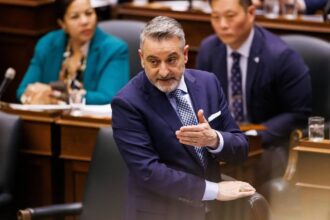In the hallways of Ontario’s public schools, a quiet crisis has been building for years. As class sizes swell and resources dwindle, educators find themselves stretched beyond reasonable limits while attempting to maintain quality education for all students. The root of this mounting pressure? A fundamentally flawed funding formula that has failed to evolve with the changing landscape of educational needs.
A recent letter from an experienced Ontario teacher has brought these concerns into sharp focus, highlighting how the province’s education funding model systematically undermines both student success and teacher effectiveness. The criticism comes at a time when debates about educational quality and resource allocation have become increasingly heated across the province.
At the heart of the issue lies a funding approach that appears divorced from classroom realities. The current formula, established decades ago, has failed to adequately account for inflation, changing demographics, and the evolving complexity of student needs. What was perhaps once a reasonable framework has calcified into a rigid system that leaves many schools chronically underfunded.
“When we examine the numbers closely,” says education policy analyst Marie Lavoie, “we find that Ontario’s per-pupil funding hasn’t kept pace with the actual costs of delivering modern, comprehensive education. This isn’t just about teacher salaries – it’s about learning materials, technology integration, special education support, and building maintenance.”
The consequences of this funding gap manifest in overcrowded classrooms where teachers must divide their attention among too many students, each with unique learning needs and challenges. For students requiring additional support, the situation becomes particularly dire as specialized resources become increasingly scarce.
Perhaps most concerning is the formula’s apparent inflexibility in addressing regional disparities. Urban schools face different challenges than rural ones, yet the funding model often fails to adequately account for these variations. Schools in economically disadvantaged areas frequently find themselves without the additional resources needed to support their student populations effectively.
The criticism extends beyond mere financial considerations. The CO24 Culture of education itself is at stake when systems prioritize standardization over personalization. When funding formulas treat education as merely a numbers game, we risk losing sight of its fundamental purpose: to nurture curious, capable, and well-rounded citizens.
This situation represents a troubling trend in how we value public education. As one former school board administrator noted, “We’ve created a system where schools must perpetually do more with less, leading to inevitable burnout among educators and missed opportunities for students.”
The teacher’s letter joins a growing chorus of voices calling for comprehensive reform of the funding formula. Advocates suggest several potential improvements, including inflation-indexed funding, greater flexibility for local needs, and enhanced support for schools serving vulnerable populations.
What’s particularly striking is how this issue transcends traditional political divides. Parents, teachers, and administrators across the ideological spectrum have expressed concern about the formula’s shortcomings. The question is not whether the system needs reform, but rather how quickly and thoroughly such changes can be implemented.
As Ontario contemplates its educational future, the funding formula debate highlights a fundamental choice about priorities. Do we view education primarily as an expense to be minimized, or as an investment in our collective future that demands adequate resourcing?
The answer to this question will shape not just classroom experiences today, but Ontario’s social and economic landscape for generations to come. When we underinvest in education, we ultimately pay higher costs elsewhere – in economic opportunity, social cohesion, and human potential.
The growing criticism of Ontario’s education funding formula isn’t merely about dollars and cents. It’s about whether we’re willing to align our stated values about the importance of education with the resources necessary to fulfill that promise. As this teacher’s critique suggests, that alignment remains dangerously out of balance.
What do you think about Ontario’s education funding? Share your opinions with us in the comments below.

























